Category: Marketing
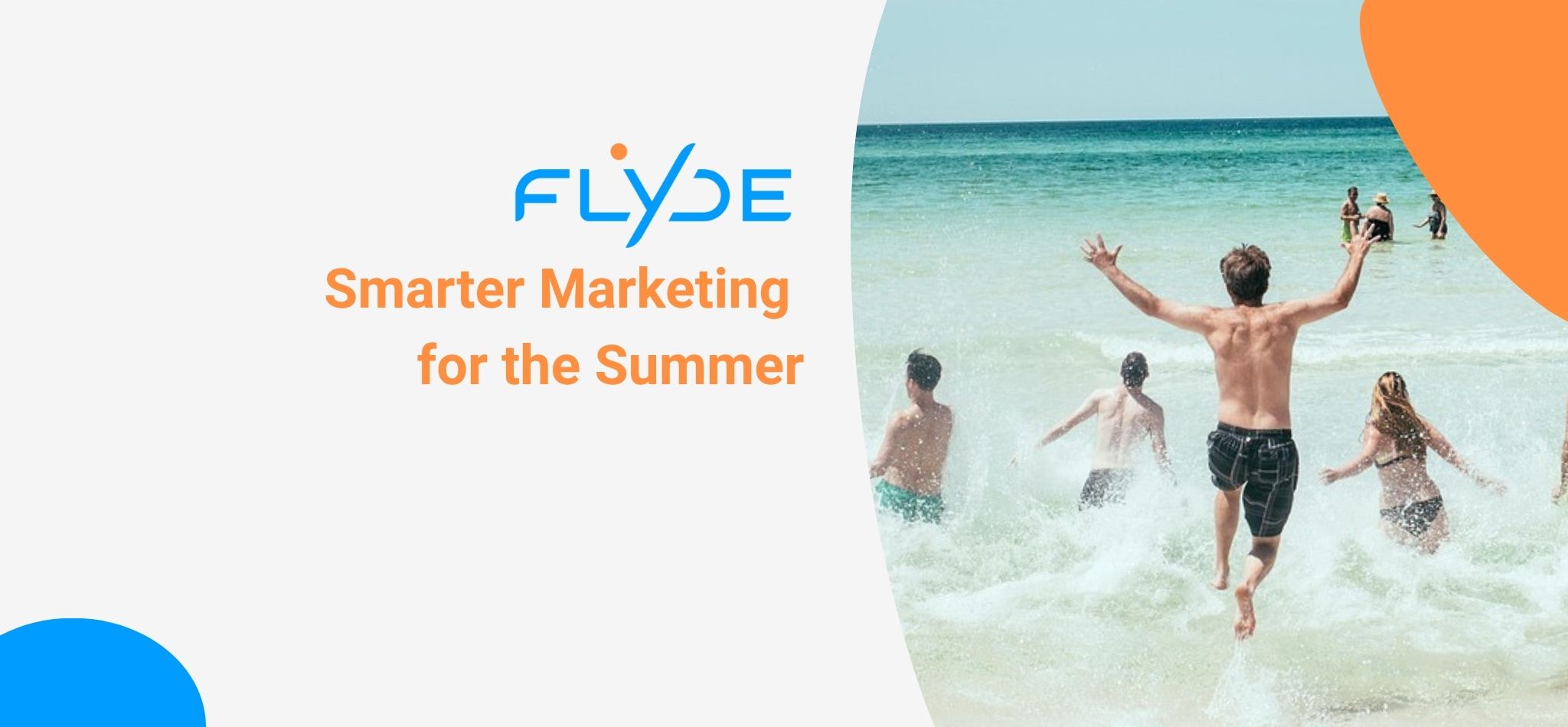
Longer days. Different routines. Out-of-office replies. Summer changes everything, including your customers’ behavior.
People shop at different hours, dine in new places, travel more (or less), and respond to different channels. The usual patterns of when, where, and how people buy can shift significantly. If your marketing is based on static segments or last year’s assumptions, you risk missing key moments of engagement.
The good news is that with a strong data strategy (and a Customer Data Platform like FLYDE) summer becomes an opportunity. You can fine-tune your segmentation, messaging, and timing to reach customers at the right moment, through the right channel, with offers that align with their seasonal behavior.
PREDICT WHAT’S NEXT WITH BEHAVIOR-BASED MODELS
Customer journeys are rarely linear. In summer, they’re even more unpredictable. FLYDE helps bring clarity to seasonal shifts by:
- Unifying real-time customer behavior across channels like web, email, mobile app, social media, and in-store POS systems.
- Applying predictive models to anticipate return likelihood, product preferences, or even travel planning windows.
- Segmenting audiences dynamically based on changes in browsing, booking, or purchase behavior.
Instead of reacting to changes after they happen, FLYDE allows you to anticipate them, so you’re always one step ahead.
HYPERPERSONALIZATION OF MESSAGING AND OFFERS
Seasonal relevance matters. Whether it’s travel planning or heatwave-driven impulse buys, being able to respond quickly makes the difference. With FLYDE, you can activate insights in real time to:
- Deliver personalized promotions based on forecasted demand and individual behavior.
- Reallocate ad spend dynamically when a campaign underperforms with specific segments.
- Automate email and advertising campaigns triggered by behavior, not just by a marketing calendar.
This means more relevant interactions, improved engagement rates, and smarter use of your marketing budget.
INDUSTRY IN FOCUS: HOTELS, RESTAURANTS, AND RETAIL
Hotels
A busy hotel could analyze in-stay guest behavior during the peak summer season. By unifying data from their app, restaurant bookings, spa services, etc., they can identify key patterns—such as which guests are most likely to book add-ons like late checkouts, poolside dining, or spa treatments. This allows them to activate targeted in-stay messaging tailored to each guest’s profile, promoting high-margin services at the optimal moment (for example, a post-check-in spa offer or late lunch promo after a pool reservation). As a result, they can expect to see not only an increase in revenue from add-ons but also higher satisfaction scores in post-stay surveys, which in turn can translate into more returning guests.
Restaurants
A high-traffic restaurant might notice that weekday lunch volume drop during the summer months, while evening and weekend group bookings rose. If they identify this pattern early, they can adjust their marketing strategy, and promote group dining offers around local events.
Retail
A fashion retailer may notice that in summer, browsing behavior shifts from desktop to mobile, particularly in the afternoons. Using the behavioral data available with a CDP, they can adapt campaign timing and creative formats to favor mobile-first formats in order to increase click-through and conversion rates.
MAKE SEASONAL SHIFTS YOUR COMPETITIVE ADVANTAGE
Many businesses feel the effects of seasonal changes, but few are ready for them. A Customer Data Platform del Cliente (CDP) like FLYDE
helps you move beyond static insights by connecting and activating your customer data in real time. With unified profiles and predictive intelligence, you can identify seasonal patterns early and respond with agility.
Instead of playing catch-up, you’re positioned to anticipate behavior and deliver personalized experiences that reflect real-time needs, whether it’s summer, back-to-school, or the holiday season.
Let’s make your data work harder this summer, and every season after. Contact us for a personalized demo of how to turn customer behavior shifts into strategic opportunities.
Start taking control of your data today.
Schedule a meeting with one of our experts and discover how FLYDE can help your company achieve its goals.
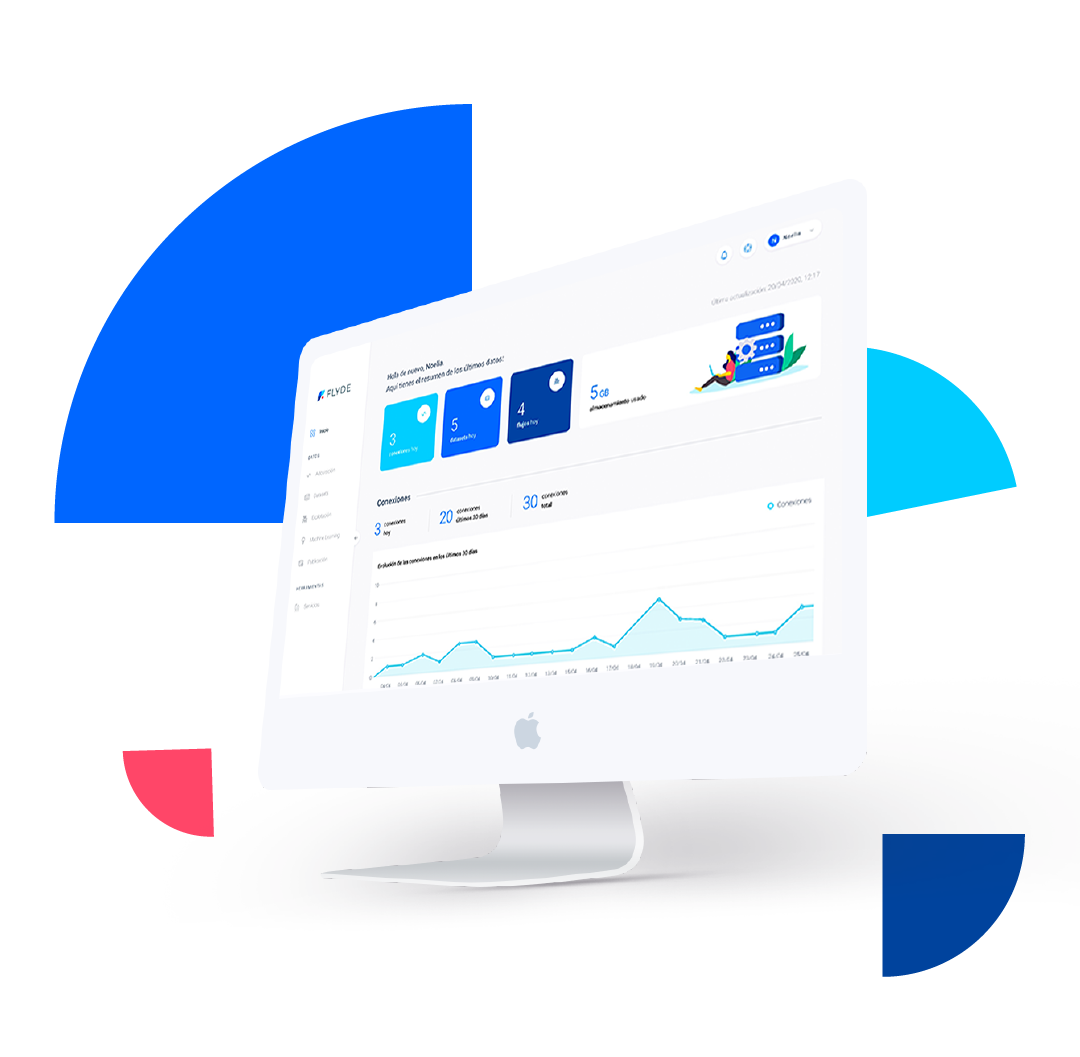
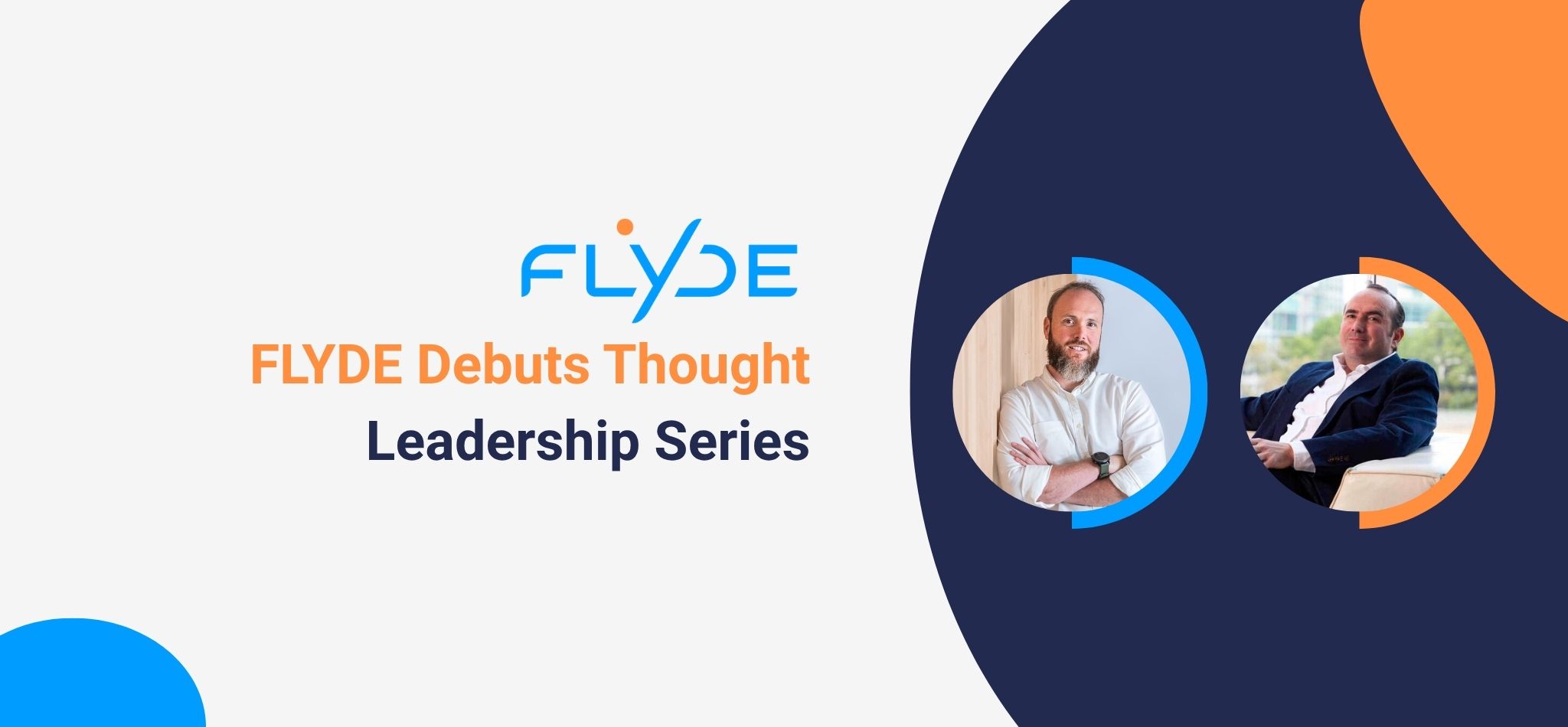
MADRID, SPAIN – June, 11, 2025 – FLYDE, a customer data platform offering an easy-to-use solution for businesses to unify fragmented data and drive growth, announces the successful launch of its new thought leadership series, FLYDE Talks. The inaugural event, entitled, “The Challenge of Attribution in Omnichannel Marketing,” drew nearly 200 registrants across Europe and Latin America, signaling strong demand for discussions on practical, data-driven marketing.
Held on June 5, 2025 via LinkedIn Live, the virtual event featured digital marketing expert Andrés Azpilicueta, broadcasting from Mexico City, Mexico alongside Paco Herranz, CEO of FLYDE, based in Madrid, Spain.
Marketers and business leaders tuned in for a candid conversation on the limitations of traditional attribution methods, and how the centralization of customer data can help address the challenges of attribution in omnichannel marketing.
“We are thrilled with the overwhelming response to our first FLYDE Talks event,” said Paco Herranz. “The challenge of attribution in omnichannel marketing is a critical issue for businesses seeking efficiency and growth. Sparking interest among nearly 200 engaged professionals reaffirms the relevance of the series in driving meaningful conversations around data-driven marketing strategies.”
A DEEPER LOOK: INSIGHTS FROM THE LIVE DISCUSSION
The talk explored how marketers can go beyond siloed data and surface-level campaign metrics to fully understand customer journeys and drive profitable decisions. Topics discussed included:
Key Trends in Digital Marketing
- Artificial Intelligence: Its ability to process data and empower human teams is undeniable.
- Zero-Based Budgeting: Requires justifying every euro spent, reinforcing the need for truly omnichannel ROI measurement.
The GA4 Challenge and the End of Cookies
- The shift to Google Analytics 4 and the phasing out of third-party cookies can cause differences of up to 30% in reported sales.
- Defending the budget requires both tactical metrics (by channel) and strategic metrics (a global view).
- FLYDE adds a first-party tracking layer to audit and correct these discrepancies.
Attribution Beyond the Last Click
- Every touchpoint adds value. Limiting to “last click” can lead to misguided decisions.
Strategic Metrics and Segmentation
- Go beyond Cost Per Acquisition (CPA): focus on Customer Lifetime Value and how it varies by type of customer (repeat, occasional, etc.).
- Not all attributes weigh equally: advanced segmentation optimally prioritizes each factor.
- Centralize your data to build the “golden record”: the foundation for reliable attribution and truly personalized marketing.
FLYDE TALKS: A PLATFORM FOR INDUSTRY DIALOGUE
FLYDE Talks is designed to be a recurring series spotlighting challenges (and solutions) facing modern marketing and growth teams. Each event will feature live case studies, expert guests, and real-time walkthroughs across industries like retail, sports, travel and hospitality, and SaaS.
“FLYDE Talks represents a vital initiative for us as a company to create an open space where marketing and data professionals can share knowledge, ask tough questions, and explore innovative strategies together,” said Katie Gortz, Marketing Manager at FLYDE.
FLYDE Talks will resume in September and forthcoming information will be published through the company’s LinkedIn page.
With regard to FLYDE Talks Episode 2, Azpilicueta hinted: “There’s huge potential in showing how a football club, for example, can use data to tailor experiences for different types of fans—casual buyers, season-ticket holders, international shoppers.”
ABOUT FLYDE
FLYDE is a customer data platform built for teams who want full control over how data flows, performs, and drives revenue. By integrating online and offline sources into a single, actionable view, FLYDE helps businesses optimize campaigns, boost retention, and connect with high-value audiences in real time. Contact FLYDE for a demo to learn more.
Start taking control of your data today.
Schedule a meeting with one of our experts and discover how FLYDE can help your company achieve its goals.

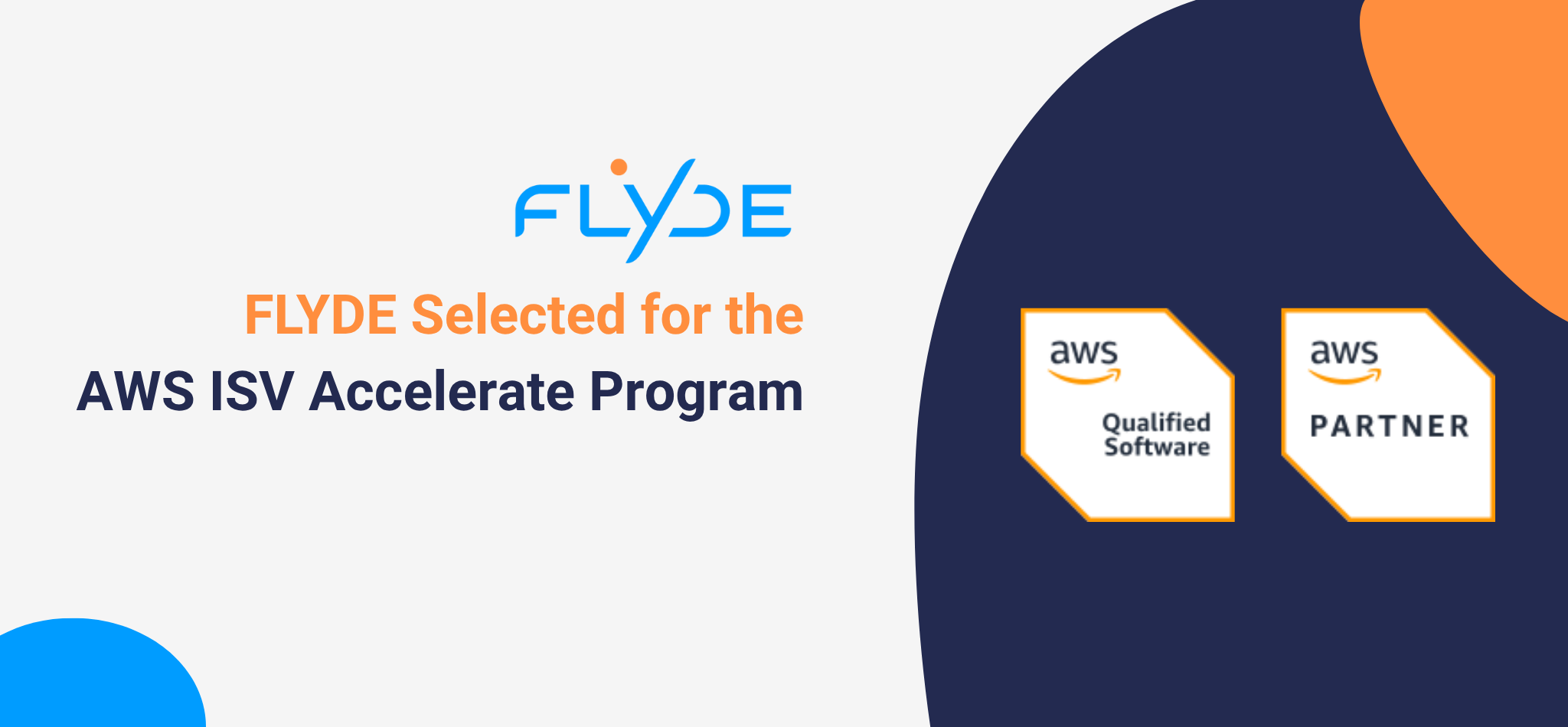
FLYDE is proud to announce its acceptance into the Amazon Web Services (AWS) Independent Software Provider (ISV) Accelerate Program, a co-sell initiative for AWS Partners that provide software solutions that run on or integrate with AWS. This milestone reflects FLYDE’s technical excellence, customer commitment, and alignment with AWS best practices—following a rigorous vetting and approval process.
The AWS ISV Accelerate Program is an exclusive program for software providers that meet high technical and business standards. Gaining acceptance into the program means that FLYDE’s platform has been carefully evaluated by AWS for its scalability, security, and performance within the AWS ecosystem.
“This isn’t a badge you simply apply for—it’s earned,” said Paco Herranz, CEO of Flyde. “Joining the AWS ISV Accelerate Program is the result of months of architectural reviews, documentation, and validation. It confirms that our infrastructure is solid and that we’re ready to grow with AWS by our side.”
FLYDE also underwent the AWS Well-Architected Framework review, which evaluates design across a series of critical pillars: operational excellence, security, reliability, performance efficiency, cost optimization, and sustainability. This designation validates that FLYDE not only runs efficiently on AWS, but also follows cloud-native best practices for secure and scalable data infrastructure. It’s further assurance that FLYDE is built on a foundation of robust, resilient, and secure cloud infrastructure.
WHAT DOES THIS MEAN FOR FLYDE’S CLIENTS?
- Faster, more secure deployments thanks to AWS-native architecture
- Improved scalability for growing businesses
- New channels of support and innovation via collaboration with AWS sales teams
- Confidence in as a thoroughly vetted solution, built to perform at enterprise standards
FLYDE’s inclusion in the ISV Accelerate program also paves the way for deeper integrations with AWS services and access to joint go-to-market opportunities through Marketplace, which will ultimately benefit clients with faster implementations and enhanced product support.
Read more about FLYDE’s AWS-native CDP and how it unifies customer data across omnichannel environments,
ABOUT FLYDE
FLYDE is a Customer Data Platform (CDP) that unifies data from multiple sources—such as eCommerce, in-store purchases, CRM systems, email campaigns, and advertising platforms—into a single, comprehensive customer profile. Using ML/AI-powered predictive models, FLYDE processes this data in real-time, to empower businesses to anticipate customer behaviors, preferences, and trends, boost acquisition, lifetime value (LTV), and retention.
Contact us for a demo and let us show you how FLYDE makes data accessible and actionable, empowering businesses to deliver smarter, more personalized experiences.
Comienza a tomar el control de tus datos desde hoy.
Agenda una reunión con uno de nuestros expertos y descubre cómo FLYDE puede ayudar a tu empresa a alcanzar sus objetivos.

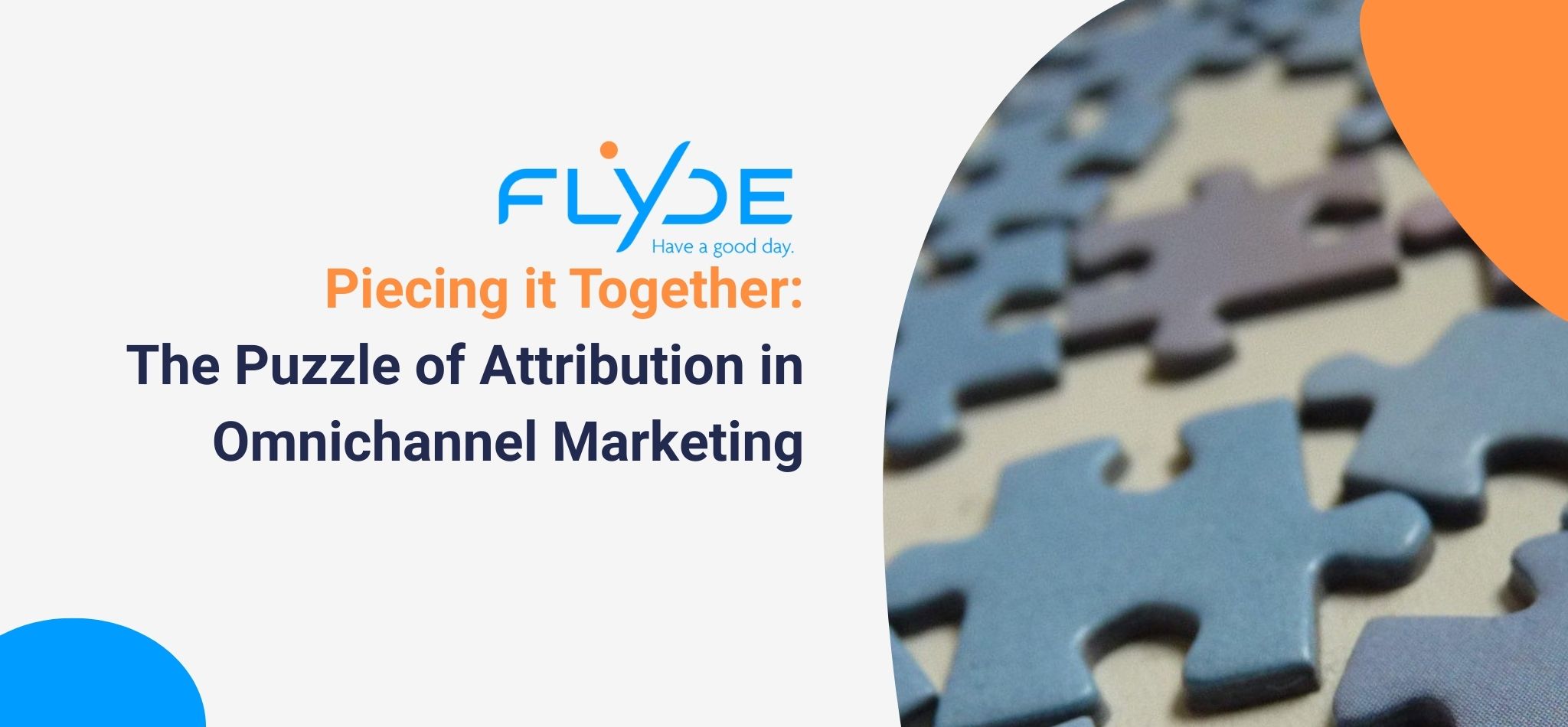
In a perfect world, a customer clicks on an ad, falls in love with your product, and converts on the spot. You know exactly which campaign worked, which channel gets credit, and where to increase your ad spend. Easy.
But we don’t live in a perfect world. The customer journey isn’t single-channel or linear. We live in the age of omnichannel marketing. The reality is that a single purchase might be influenced by a Google search, a TikTok video, a webinar, a promotional email, or a conversation with your sales team.
Attribution—figuring out which touchpoints actually matter in the buyer’s journey—is no longer simple. It’s a messy, multi-source puzzle. And without solving it, you risk spending your budget in the wrong places.
So, let’s dive in and examine what attribution really means in omnichannel marketing campaigns and what challenges we face as marketers to assign credit where credit is due.
WHAT IS ATTRIBUTION?
At its core, attribution is about assigning credit to each step that helps take a customer from “just looking” to “just bought.”
In single-channel or linear journeys, this used to be easy. But today, marketers rely on a mix of digital and offline channels working together, which means that the process of attribution has had to evolve.
Let’s look at a few common attribution models:
- First-touch: Gives all credit to the first interaction. If we want to focus on awareness metrics, this is a great approach, but it offers little insight in terms of conversions.
- Last-touch: Credits the final click before a conversion. Many platforms use this as the default model, but it represents an oversimplification of the customer journey.
- Linear: Spreads credit evenly across all touchpoints. Here, the whole journey is taken into account, but not very strategically.
- Time-decay: Gives more credit to recent touchpoints. This model is well-suited to long nurture cycles.
- U-shaped (position-based): Emphasizes the first and last touchpoints, with less credit to the middle. Here, there is an emphasis on the awareness and decision stages of the funnel, but the model is apt to under-credit important engagement actions.
- Data-driven: Uses machine learning to assign weights based on actual conversion data. This model is ideal—but requires strong data hygiene and scale.
Each model has its own advantages and its own bias. In complex, omnichannel campaigns with many different touchpoints, it becomes increasingly important to move beyond simplistic models and embrace AI-powered attribution, which can analyze massive, messy datasets and zero in on what is driving conversions.
WHY DOES ATTRIBUTION GET COMPLICATED IN OMNICHANNEL CAMPAIGNS?
In the world of omnichannel marketing, the customer journey rarely follows a predictable path. The customer journey nowadays is non-linear, fragmented, and often, a portion of the journey is undertaken while the user is still anonymous.
Here’s why attribution is so tricky today:
- Device-hopping behavior: Your lead might see an Instagram ad on a mobile, Google your product on a laptop, and sign up for your newsletter from a desktop at work. The right tracking set-up is essential for connecting the dots.
- Walled gardens: Platforms like Meta, Google, and Amazon often don’t share data with each other—or with you! In these cases, each platform may allow advertising and data analysis within its own ecosystem using proprietary attribution and tracking methods, while limiting access to raw data for export to other platforms.
- Offline influences: Sales calls, print materials, events, or word-of-mouth are all powerful but hard to track.
- Privacy regulations: With the deprecation of third-party cookies and tighter data regulations, user-level tracking is more limited, making granular attribution even more challenging.
The result? A lot of guesswork and misallocated spending.
HOW TO IMPLEMENT ATTRIBUTION STRATEGIES FOR OMNICHANNEL MARKETING CAMPAIGNS
The key to approaching attribution for omnichannel marketing is to stop aiming for perfect attribution—and start aiming for actionable insight.
Here’s how to get started:
- Unify your tracking setup:
- Implement clean, consistent UTM parameters
- Your CRM and ad platforms must be connected. A Customer Data Platform (CDP) like FLYDE can bring it all together (more on that later)
- Invest in smarter analytics:
- Develop funnel-based dashboards tied to your KPIs
- Implement machine learning models if your data volume allows
- Set realistic expectations:
- Attribution will never be 100% accurate
- Focus on directional insight that can inform your strategic decisions
- Align attribution analysis to business outcomes (not just clicks)
Instead of chasing perfection, chase progress. Map the journeys, unify the data, and use a tool like FLYDE to reveal insight. The goal isn’t to give perfect credit; it’s to make smarter, more confident decisions.
FLYDE’S VISION ON SMARTER ATTRIBUTION
To address these omnichannel challenges and the need for a unified view, a Customer Data Platform (CDP) like FLYDE becomes essential for consolidating data from various sources.
FLYDE centralizes data from touchpoints across paid media, CRM, social, email, web navigation, and offline events. Whether you’re working with dozens of fragmented sources or just trying to get a full view of the customer journey, FLYDE brings your data together to offer clarity and insight.
Here’s a real-world example:
Imagine you run a lead-gen campaign using a CPC paid search campaign in Google, Meta ads, a product webinar, and follow-up email flows. With FLYDE:
- All touchpoints are stitched together—even across platforms.
- You can see how many leads saw an ad and attended the webinar.
- You can compare performance across acquisition and nurture phases.
- Attribution is based on your journey logic, not just Google’s last-click default.
This kind of transparency doesn’t just look good in reports—it drives better decision-making. When you know what’s working, you can double down. When something’s underperforming, you can pivot fast. Ultimately, effective attribution leads to optimized advertising spend, a deeper understanding of customer behavior, and improved ROI.
Contact us for a demo and we can show you how FLYDE approaches omnichannel attribution in our easy-to-use Customer Data Platform.
Comienza a tomar el control de tus datos desde hoy.
Agenda una reunión con uno de nuestros expertos y descubre cómo FLYDE puede ayudar a tu empresa a alcanzar sus objetivos.

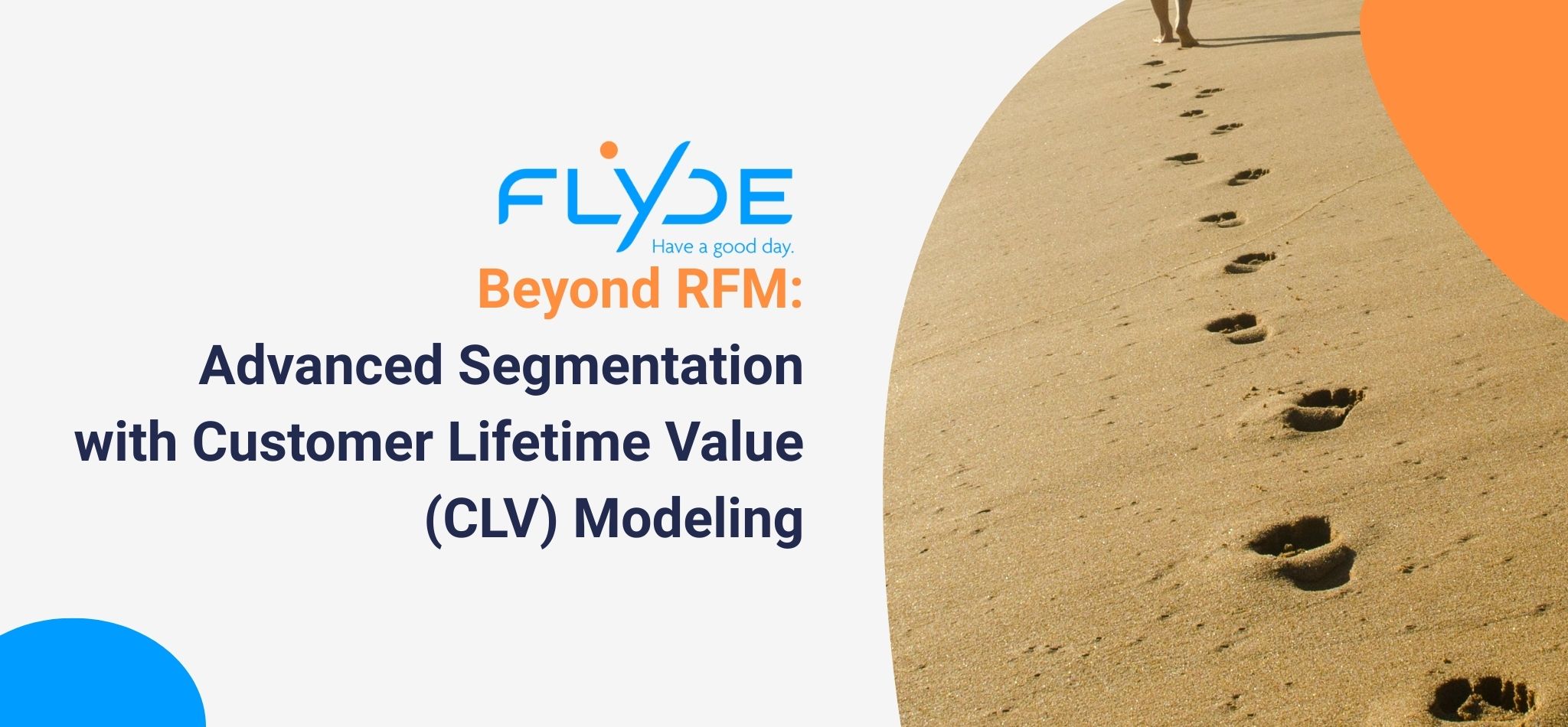
In the world of customer analytics, RFM analysis has long been a favorite for segmenting customers based on their Recency, Frequency, and Monetary behaviors. While RFM provides a solid foundation, many businesses are looking for more advanced segmentation techniques to capture the full picture of customer behavior. One such method is Customer Lifetime Value (CLV) modeling, which estimates the total revenue a customer is likely to generate over their entire relationship with your brand.
In this post, we’ll explore how CLV modeling works, its benefits, and how it complements—or even surpasses—traditional RFM analysis.
WHAT IS CUSTOMER LIFETIME VALUE (CLV)?
Customer Lifetime Value (CLV) is a prediction of the net profit attributed to the entire relationship with a customer. CLV is forward-looking. It allows marketers to estimate not only who your best customers are today, but also who will be most valuable in the future.
Key Components of CLV:
- Purchase Frequency: How often a customer is expected to buy.
- Average Order Value: The typical value of each transaction.
- Customer Lifespan: The estimated duration of the relationship.
- Profit Margin: The profitability of each sale.
By incorporating these elements, CLV modeling provides a dynamic and comprehensive view of customer value.
WHY MOVE BEYOND RFM?
RFM analysis is great for quick segmentation, but it has its limitations:
- Historical Focus: RFM is inherently backward-looking. It categorizes customers based on past behavior without necessarily predicting future potential.
- Lack of Predictive Power: While RFM can identify segments, it doesn’t forecast future revenue or profit, which is essential for long-term planning.
- Simplistic Assumptions: RFM treats all transactions equally, ignoring nuances like evolving market conditions.
CLV modeling, on the other hand, addresses these gaps by providing actionable insights into future customer value.
HOW TO IMPLEMENT CLV MODELING FOR ADVANCED SEGMENTATION
- Data Collection and Integration: Start by gathering comprehensive customer data—transaction histories, behavioral data, and engagement metrics. A Customer Data Platform (CDP) like FLYDE can integrate data from multiple sources, ensuring you have a unified view of customer interactions.
- Define the CLV Model: Start by selecting a CLV model that aligns with your business goals and data maturity. The most common approaches include:
- Historical CLV: Based on past purchase behavior, this model helps estimate future value using existing transaction data.
- Predictive CLV: Uses statistical or machine learning techniques to forecast future customer value based on historical trends, behavioral signals, and engagement patterns.
At FLYDE, we use a hybrid approach—combining both historical and predictive modeling to get the best of both worlds. Historical CLV powers real-time calculations, giving you an up-to-date view of current customer value. Predictive CLV goes further, projecting customer value over 6, 12, 18, and 24 months to support long-term planning and proactive engagement strategies.
- Segment Based on CLV: Once you have calculated the CLV for each customer, you can segment your audience into groups such as:
- High CLV Customers: Your most valuable customers deserve personalized engagement and loyalty programs.
- Mid-Tier Customers: Those with moderate potential who could be nurtured to increase their value.
- Low CLV or At-Risk Customers: Customers who might require re-engagement strategies or cost-effective campaigns to improve retention.
- Tailor Marketing Strategies: With your segments defined, develop targeted strategies for each group. For instance:
- High CLV: Offer exclusive deals, early access to new products, or premium support.
- Mid-Tier: Encourage upsells and cross-sells through personalized recommendations
- Low CLV: Implement re-engagement campaigns or educational content to drive increased interaction.
- Measure and Refine: Use performance metrics such as conversion rates, retention rates, and overall revenue growth to continuously evaluate your CLV segments. Regularly update your model with fresh data to keep your segmentation relevant.
THE BENEFITS OF CLV-BASED SEGMENTATION
- Resource Optimization: By focusing on high-value customers, you can allocate your marketing budget more effectively.
- Enhanced Personalization: Tailored messaging based on predicted future value fosters stronger customer relationships.
- Improved Forecasting: CLV modeling provides a forward-looking view that helps in strategic planning and setting realistic growth targets.
- Customer-Centric Strategies: Understanding customer potential allows you to design loyalty programs and re-engagement strategies that resonate with each segment.
While RFM analysis offers a quick snapshot of customer behavior, advanced segmentation through Customer Lifetime Value modeling provides insights that drive long-term success. By predicting future customer value and tailoring your marketing strategies accordingly, you can maximize ROI, enhance customer satisfaction, and build sustainable growth.
WHY FLYDE?
Embracing advanced segmentation with CLV modeling can transform your customer engagement and drive sustainable growth. FLYDE’s CDP automates data collection and integration from various touchpoints, providing a comprehensive view of customer interactions necessary for accurate CLV calculations.
Do you want your company to move on to the next level? A CDP is the key tool that will allow you to maximize the potential of your data and grow your business. Having control over all your data is now very simple.
Moreover, if you do not have IT or Data Scientist teams, this tool will allow you to outsource this function. And if you have them but want to reduce their workload and give more autonomy to your marketing and business teams when it comes to working with data, implementing an easy-to-use CDP would be the best option for your company. It will allow any single member of your company to use it, as this softwares are prepared for them.
Start taking control of your data today.
Schedule a meeting with one of our experts and discover how FLYDE can help your company achieve its goals.

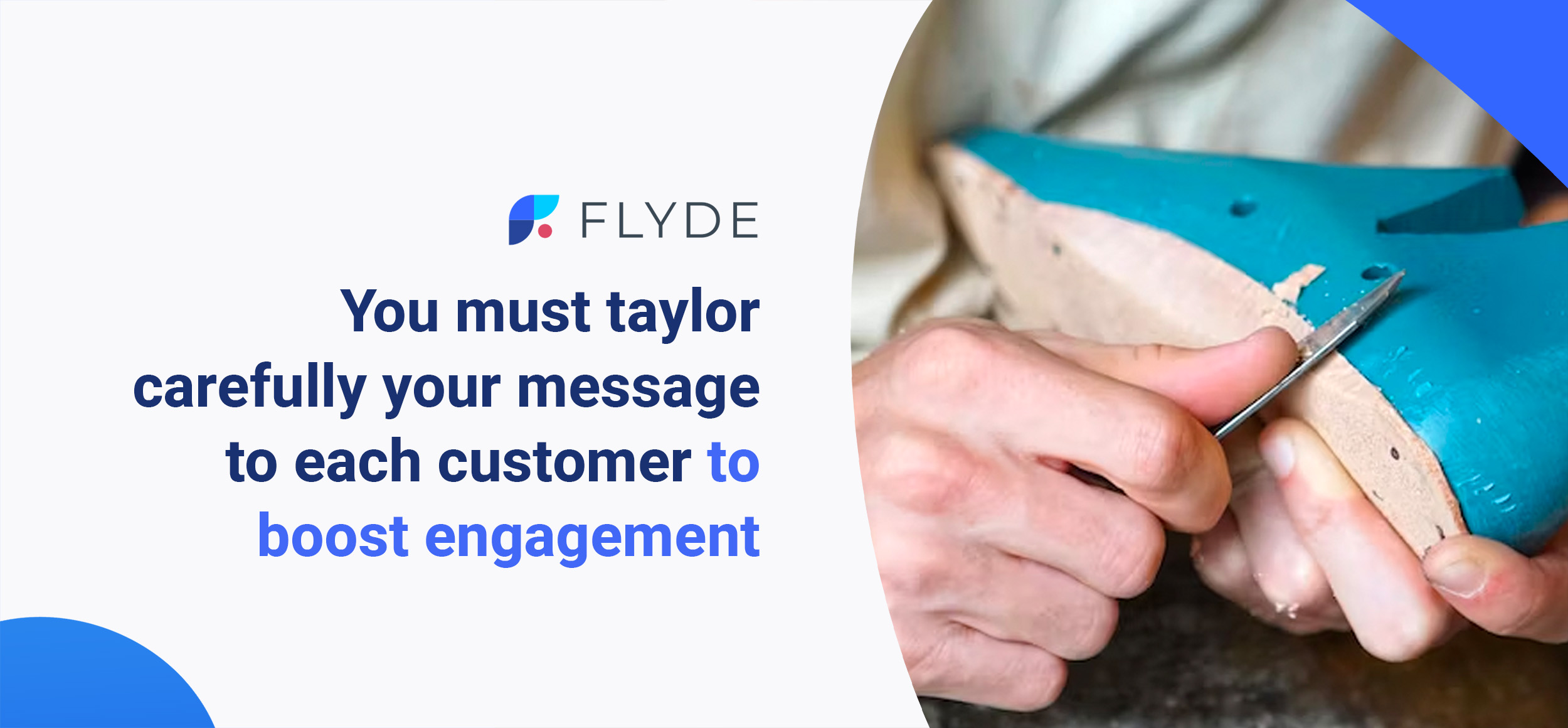
Marketing one-to-one is the latest way of developing marketing strategies, which involves practicing the highest level possible of personalization towards your customers. This high level of personalization is already being carried out by many companies through various channels, such as social media ads, email marketing, website personalization, and offline marketing.
By leveraging customer data and machine learning, marketing one-to-one enables companies to create personalized experiences that distinguish their brand from competitors and boost sales.
How to carry out Marketing one-to-one strategies?
To carry out marketing one-to-one strategies, data is fundamental. Once this data is obtained, it needs to be actionable. Here are four simple steps to follow:
-
-
- Know your customer: To develop this type of strategy, you need to know your customers’ preferences in terms of buying habits, content, and products. Collect every piece of data available for each customer, such as their demographics, purchase history, and engagement with your brand.
- Know your product: Like with customers, you need to know why each product is liked by each customer or why it isn’t, and what it can bring them.
- Know the effect of your campaigns: By analyzing historical data, you can determine the impact of each campaign on each of your customers and products.
- Develop original personalized content: Once you’ve analyzed customer and product data, you should be able to develop unique, appealing content for each customer depending on their wishes and needs.
-
What technology do I need to carry out a Marketing one-to-one Strategy?
To carry out marketing one-to-one strategies, a Customer Data Platform (CDP) is a critical technology for retailers. A CDP allows companies to store every piece of data related to customers, sales, campaigns, and any other useful data for your company’s purposes. With the help of artificial intelligence (AI), a CDP can cross-reference this data to obtain 360 profiles of your customers. These profiles, combined with AI, allow you to hyper-segment, personalize, and predict future behaviors of your customers.
An example of a Data-Driven Marekting one-to-one strategy
For example, if you are a fashion retailer, you can use the data mentioned before to understand your customers’ preferences, such as the size of your customer, the type of clothes they like, and the amounts of money they usually spend.
By analyzing customer behavior during specific events, such as special holidays or sales events, you can adjust your marketing campaigns to match their behavior. If a customer tends to buy multiple items during a particular event, you can recommend similar products or offer a discount for a bundle purchase. This type of personalized experience is what customers demand today, and it can lead to increased customer satisfaction and loyalty.
WHY FLYDE?
Do you want your company to move on to the next level? A CDP is the key tool that will allow you to maximize the potential of your data and grow your business. Having control over all your data is now very simple.
Moreover, if you do not have IT or Data Scientist teams, this tool will allow you to outsource this function. And if you have them but want to reduce their workload and give more autonomy to your marketing and business teams when it comes to working with data, implementing an easy-to-use CDP would be the best option for your company. It will allow any single member of your company to use it, as this softwares are prepared for them.
Start taking control of your data today.
Schedule a meeting with one of our experts and discover how FLYDE can help your company achieve its goals.

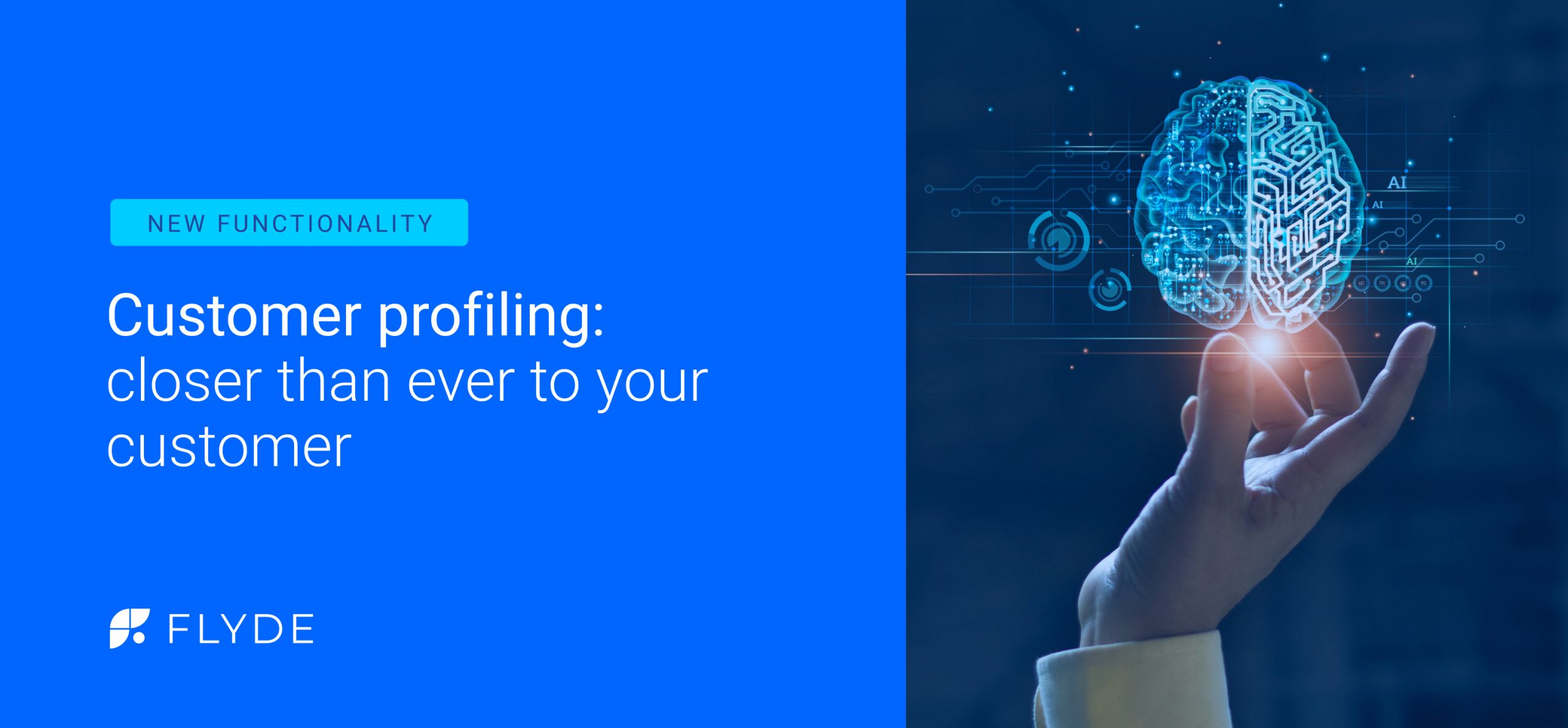
FLYDE is an easy-to-use Customer Data Platform designed to meet the needs of businesses looking to improve their customers’ experience, increase retention, ROI, ROAS, and Customer Engagement.
In this blog, we will discuss the new functionality of the platform: Customer Profiling guided by predictive AI models.
What is customer profiling?
Customer profiling is a tool that allows businesses to better understand their customers and tailor their offerings to meet their specific needs. With FLYDE’s customer profiling, businesses can select a product from their catalog and see the main characteristics of the customers who purchase it. Predictive AI models evaluate all available data your company has on your customers such as their behavior, purchase patterns, product preferences, browsing habits, and more.
How does FLYDE’s customer profiling work?
Suppose a company has a product in its catalog and wants to better understand its precise customers to adapt its marketing strategy. With FLYDE, the company can select that product and use predictive AI models to identify the main characteristics of the customers who purchase it. For example, the models may reveal that customers who buy that product earn more than €40,000, log into the ecommerce page twice a week, and often make purchases in physical stores.
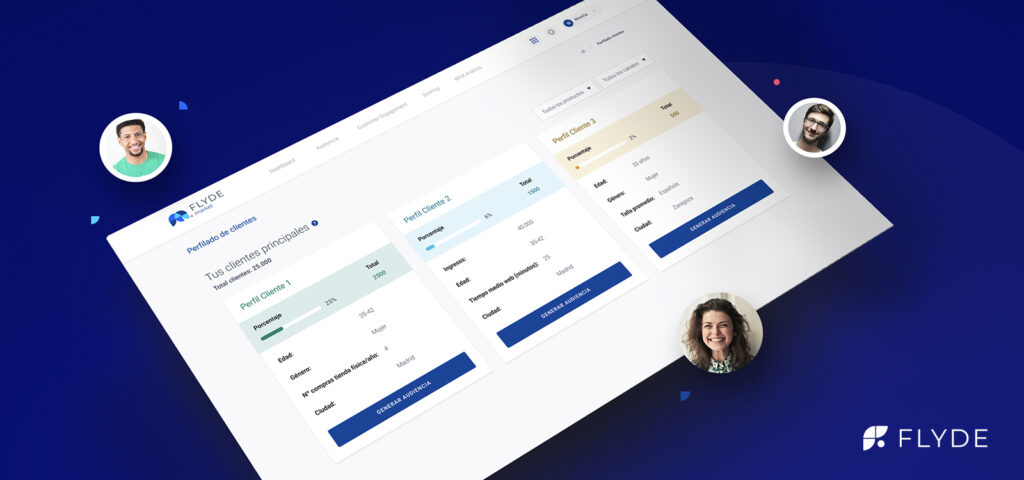
How can customer profiling improve your marketing strategy?
Predictive AI-guided customer profiling can significantly improve your marketing strategy by allowing you to better understand your customers and tailor your offerings to their specific needs. By using this new functionality of FLYDE, you can personalize your marketing messages to meet the specific needs and desires of your customers.
Additionally, customer profiling also allows you to improve the segmentation of your marketing campaigns. By better understanding your customers and grouping them into segments based on their characteristics, you can personalize your messages and offers for each specific segment. This will allow you to reach your customers with more relevant messages, increasing the likelihood of conversion to sales.
Identifying new potential customers with Customer Profiling
In addition to helping you better understand your current customers, FLYDE’s customer profiling also allows you to identify new potential customers. The platform’s AI uses the purchase behavior data of your current customers to find patterns and similarities between them.
These patterns help you identify new business opportunities by finding potential customers who have a similar profile to your current customers. By understanding your customers’ preferences and behaviors, you can use that information to reach a wider audience that is more likely to buy your products or services.
With FLYDE’s customer profiling, you can discover new market segments that may not have been on your radar and adjust your marketing strategy to reach them more effectively. This can result in a higher return on investment and increased customer loyalty.
Why FLYDE
Do you want your company to move on to the next level? A CDP is the key tool that will allow you to maximize the potential of your data and grow your business. Having control over all your data is now very simple.
Moreover, if you do not have IT or Data Scientist teams, this tool will allow you to outsource this function. And if you have them but want to reduce their workload and give more autonomy to your marketing and business teams when it comes to working with data, implementing an easy-to-use CDP would be the best option for your company. It will allow any single member of your company to use it, as this softwares are prepared for them.
Try it for free with our free trial (with auto-generated fake data)!
Start taking control of your data today.
Schedule a meeting with one of our experts and discover how FLYDE can help your company achieve its goals.

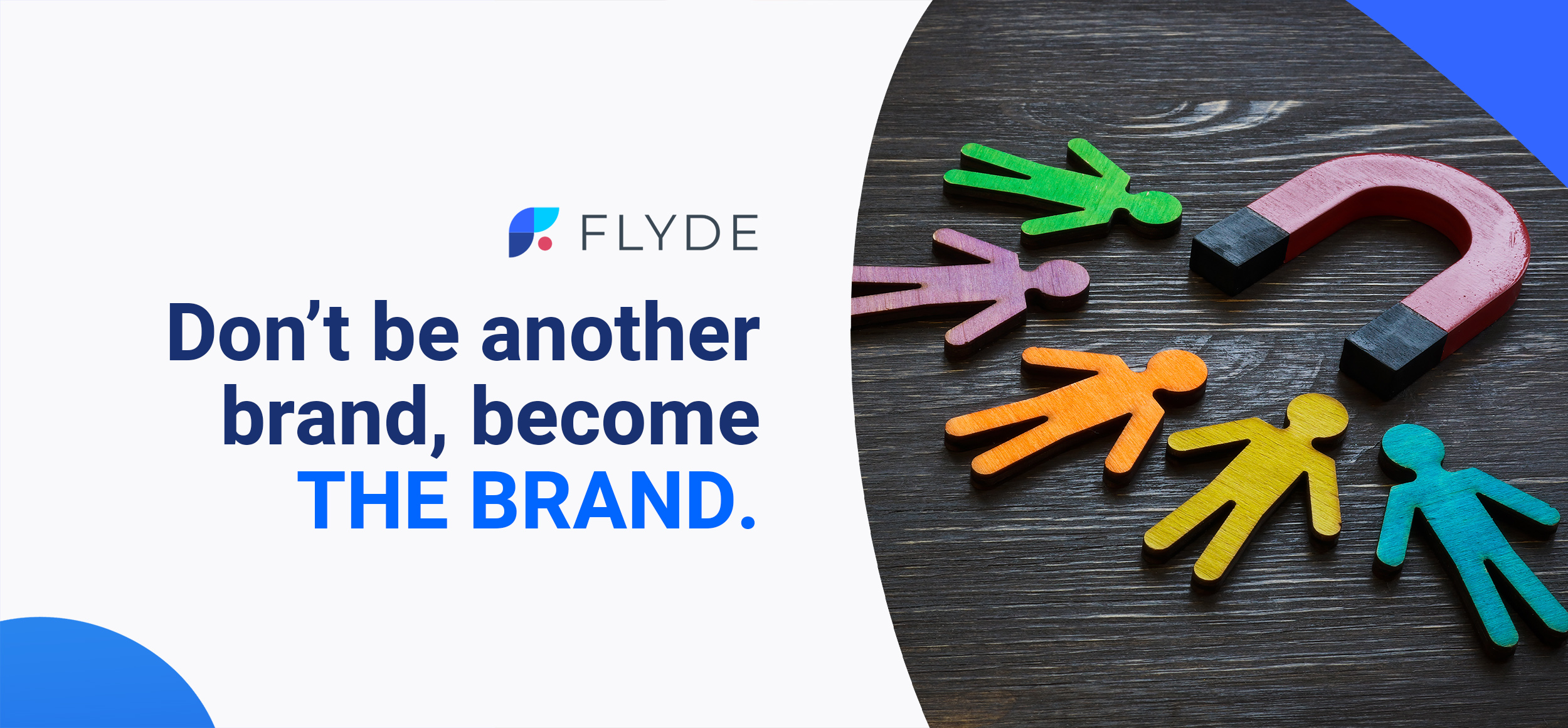
As the world becomes increasingly competitive, companies must focus on customer satisfaction and loyalty to succeed. While customer acquisition is essential for growth, customer retention is even more critical. Retaining existing customers is essential for the long-term health of any business, as loyal customers tend to spend more, refer more, and cost less to retain.
In this blog, we will discuss marketing retention vs. acquisition and why current trends show that retention is much more important. We will also explore how a Smart Customer Data Platform (CDP) can help companies boost retention.
The importance of Customer Retention
The cost of acquiring new customers is significantly higher than retaining existing ones. According to a study by Harvard Business Review, increasing customer retention by just 5% can increase profits by 25-95%. This is because loyal customers tend to spend more, refer more, and cost less to retain.
Additionally, loyal customers provide valuable feedback and can help businesses improve their products and services. Therefore, it is essential for companies to focus on retaining existing customers.
Customer Retention vs. Customer Acquisition
While customer acquisition is necessary for growth, it should not come at the expense of customer retention. Many companies make the mistake of focusing too much on acquiring new customers and neglecting existing ones. However, research shows that companies that focus on customer retention tend to be more successful in the long run. Customer retention should be a top priority for any company that wants to grow and thrive.
The benefits of focusing on retention over acquisition
Focusing on customer retention over acquisition can provide a number of benefits to companies, including increased customer lifetime value (CLV), improved customer loyalty, and reduced marketing costs. By retaining existing customers, companies can increase CLV by encouraging repeat purchases and reducing churn. Additionally, loyal customers tend to refer others to the company, which can help reduce marketing costs associated with customer acquisition. By prioritizing retention, companies can create a positive cycle of growth that leads to long-term success.
How a Smart CDP can help boost retention
A Smart CDP can provide a comprehensive view of a company’s customers, allowing them to personalize marketing messages, improve customer service, and identify opportunities to upsell and cross-sell.
For example, let’s say a retailer collects data on a customer’s purchase history, browsing behavior, and preferences. With a Smart CDP, the retailer can use this data to send targeted marketing messages based on the customer’s interests and behavior. They can also use the data to recommend complementary products, provide personalized promotions, and improve customer service by addressing the customer’s specific needs and concerns. By using a Smart CDP, the retailer can create a more personalized and engaging experience for their customers, which can lead to increased loyalty and retention.
WHY FLYDE?
Do you want your company to move on to the next level? A CDP is the key tool that will allow you to maximize the potential of your data and grow your business. Having control over all your data is now very simple.
Moreover, if you do not have IT or Data Scientist teams, this tool will allow you to outsource this function. And if you have them but want to reduce their workload and give more autonomy to your marketing and business teams when it comes to working with data, implementing an easy-to-use CDP would be the best option for your company. It will allow any single member of your company to use it, as this softwares are prepared for them.
Start taking control of your data today.
Schedule a meeting with one of our experts and discover how FLYDE can help your company achieve its goals.

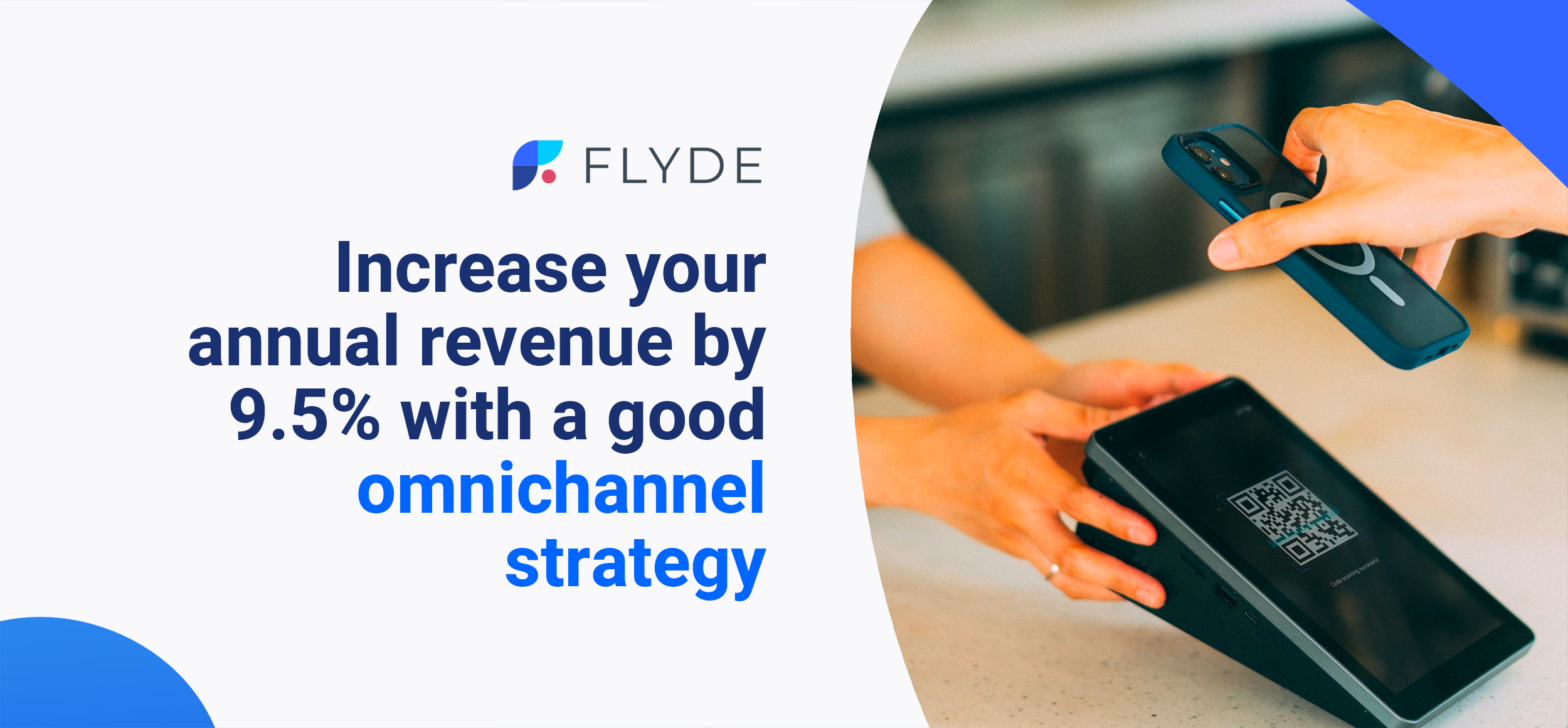
According to Harvard Business Review, 73% of consumers use multiple channels throughout their purchase process.
In today’s digital age, customers expect seamless, personalized experiences across all channels. To meet these expectations, companies need to implement omnichannel marketing strategies that integrate all of their marketing channels. However, this can be challenging without the right tools and technology.
In this blog, we’ll explore the benefits of omnichannel marketing for companies and how a customer data platform (CDP) can help make it easier and more effective.
How to Create Omnichannel Customer 360 Profiles
To create omnichannel customer 360 profiles, companies need to aggregate and unify customer data from all sources. This includes online and offline interactions, such as purchases, website visits, social media engagement, and in-store interactions. A CDP can help with this by ingesting data from various sources, cleaning and deduplicating it, and stitching it together into a single, comprehensive customer profile.
Once the data is integrated into the CDP, the company can start building out the 360-degree view of each customer. This involves mapping out each customer’s interactions across different channels, tracking their preferences and behavior, and segmenting them based on attributes such as demographics, purchase history, and engagement.
How to Obtain Insights from Customer 360 Profiles
Once a retailer has created omnichannel customer 360 profiles, they can start leveraging the insights to improve their customer experience. A CDP, as well as ingesting and structuring data, can be used to obtain insights, with the different tools that conform this type of platforms.
One way to obtain insights from customer 360 profiles is to use real-time personalization. By leveraging the data in the CDP, retailers can create personalized experiences for each customer based on their preferences and behavior. This can include personalized product recommendations, targeted promotions, and customized messaging.
Applying Artificial Intelligence with a Smart CDP
AI can be used to analyze large volumes of customer data and uncover insights that might not be apparent from manual analysis. For example, AI-powered predictive analytics can be used to anticipate customer needs and preferences, as well as identify opportunities for cross-selling and upselling.
Another way to apply AI to customer 360 profiles is through machine learning. By training machine learning models on customer data, retailers can automate tasks such as product recommendations and content personalization, as well as improve the accuracy of predictive analytics.
Summary
Creating omnichannel customer 360 profiles with a CDP is a critical step for retailers looking to provide personalized, seamless experiences across all channels. By leveraging AI-powered analytics and personalization, retailers can gain valuable insights from these profiles and use them to improve the customer experience. So, if you’re a retailer looking to enhance your customer engagement, consider implementing a CDP and start creating omnichannel customer 360 profiles today.
WHY FLYDE?
Do you want your company to move on to the next level? A CDP is the key tool that will allow you to maximize the potential of your data and grow your business. Having control over all your data is now very simple.
Moreover, if you do not have IT or Data Scientist teams, this tool will allow you to outsource this function. And if you have them but want to reduce their workload and give more autonomy to your marketing and business teams when it comes to working with data, implementing an easy-to-use CDP would be the best option for your company. It will allow any single member of your company to use it, as this softwares are prepared for them.
Start taking control of your data today.
Schedule a meeting with one of our experts and discover how FLYDE can help your company achieve its goals.

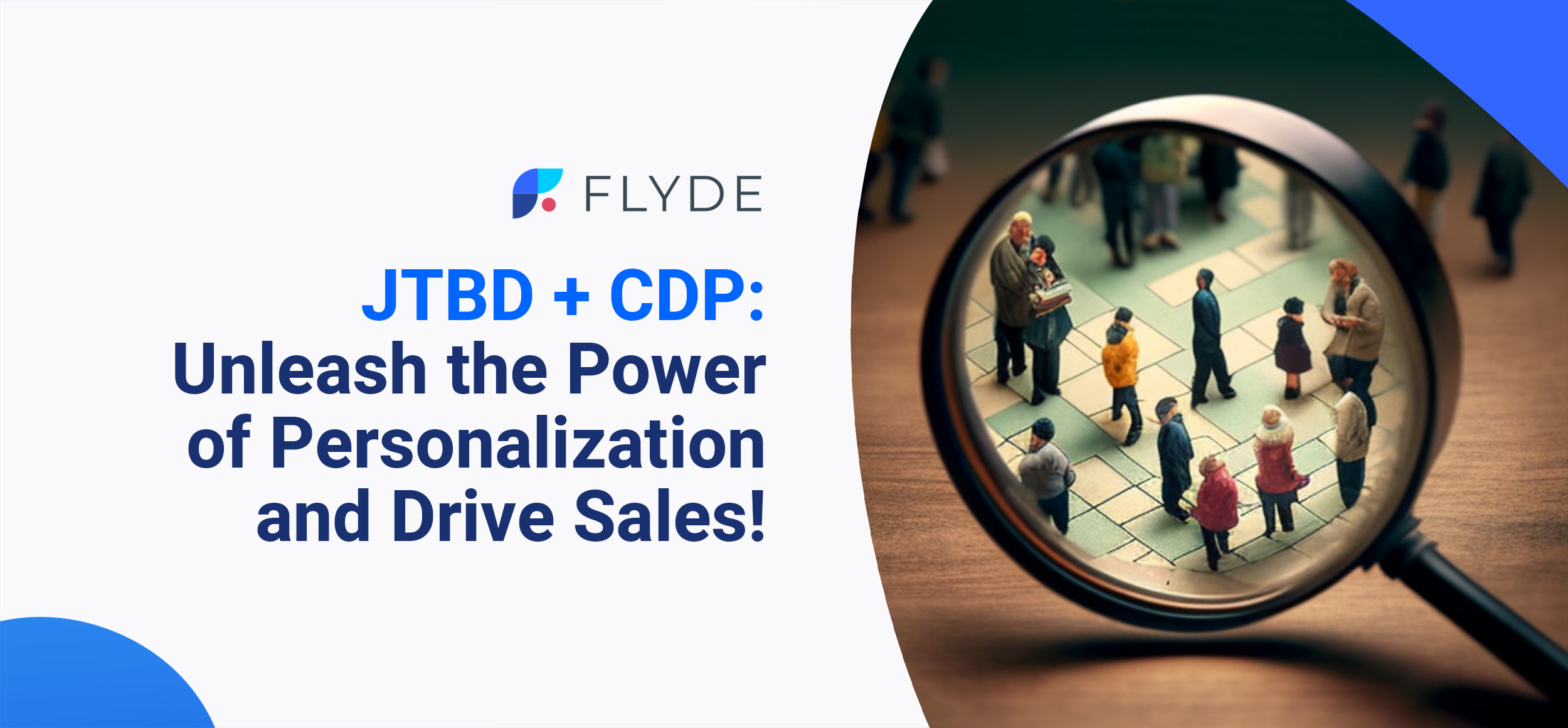
Understanding your customers’ needs and desires is essential to building a successful business. However, it’s not enough to simply ask your customers what they want. To truly understand their needs, you must identify the jobs or tasks they are trying to accomplish. This is where the Jobs-To-Be-Done (JTBD) framework comes in.
In this blog, we’ll see how to improve your JTBD strategy with a Customer Data Platform (CDP). By using a CDP, you can gain a more comprehensive understanding of your customers and their behaviors, which can help you improve your JTBD strategy.
Why Understanding JTBD Is Crucial for Your Business
Jobs-To-Be-Done (JTBD) is a framework that helps businesses understand the needs and desires of their customers by focusing on the jobs or tasks that customers are trying to accomplish. By understanding your customers’ JTBD, you can design products and services that meet their needs and differentiate yourself from competitors.
How to Improve Your JTBD Strategy with a CDP
A Customer Data Platform (CDP) is a data management tool that allows you to collect, unify, and analyze customer data from multiple sources. By using a CDP, you can gain a more comprehensive understanding of your customers and their behaviors, which can help you improve your JTBD strategy.
Here are four ways to improve your JTBD strategy with a CDP:
-
-
-
- Collect and unify customer data from multiple sources: A CDP allows you to collect and unify customer data from multiple sources, giving you a more comprehensive view of your customers.
- Analyze customer data using the JTBD framework: Using the JTBD framework, you can analyze customer data to identify the specific jobs your customers are trying to accomplish.
- Personalize marketing and product recommendations: By using the CDP to personalize your marketing and product recommendations, you can better meet your customers’ JTBD and increase engagement and sales.
- Optimize inventory to better meet customer needs: By understanding your customers’ JTBD, you can optimize your inventory to better meet their needs, reducing waste and improving your bottom line.
-
-
Case Study – How could a retailer improve their JTBD strategy with a CDP?
A retailer uses a CDP to collect and unify customer data from multiple sources, enabling them to gain a comprehensive view of their customers and their behaviors. Using the JTBD framework, the retailer analyzes the data to identify the specific jobs their customers are trying to accomplish when they shop for clothes, such as looking for stylish and fashionable clothes, prioritizing comfort and functionality, or finding clothes for specific occasions.
The retailer uses the CDP to personalize their marketing and product recommendations to better meet their customers’ JTBD. By creating targeted email campaigns and personalized product recommendations, the retailer increases customer engagement and sales, leading to higher customer loyalty and repeat purchases.
Additionally, the retailer is able to optimize their inventory to better meet their customers’ needs, reducing waste and improving their bottom line. In this way, using JTBD and a CDP can help fashion retailers to better understand their customers and improve their business results in a highly competitive industry.
Conclusion and Next Steps
In conclusion, understanding your customers’ JTBD is essential to designing products and services that meet their needs. By using a CDP to collect, unify, and analyze customer data, you can gain a deeper understanding of your customers and improve your JTBD strategy. To get started, consider implementing a CDP and using the four strategies outlined in section two to improve your JTBD strategy. With a more customer-centric approach, you can differentiate yourself from competitors and build stronger, more loyal customer relationships.
WHY FLYDE?
Do you want your company to move on to the next level? A CDP is the key tool that will allow you to maximize the potential of your data and grow your business. Working like the big multinationals in the market, which already have this type of software, and having control over all your data is now very simple.
Moreover, if you do not have IT or Data Scientist teams, this tool will allow you to outsource this function. And if you have them but want to reduce their workload and give more autonomy to your marketing and business teams when it comes to working with data, implementing an easy-to-use CDP would be the best option for your company. It will allow any single member of your company to use it, as this softwares are prepared for them.
Start taking control of your data today.
Schedule a meeting with one of our experts and discover how FLYDE can help your company achieve its goals.

